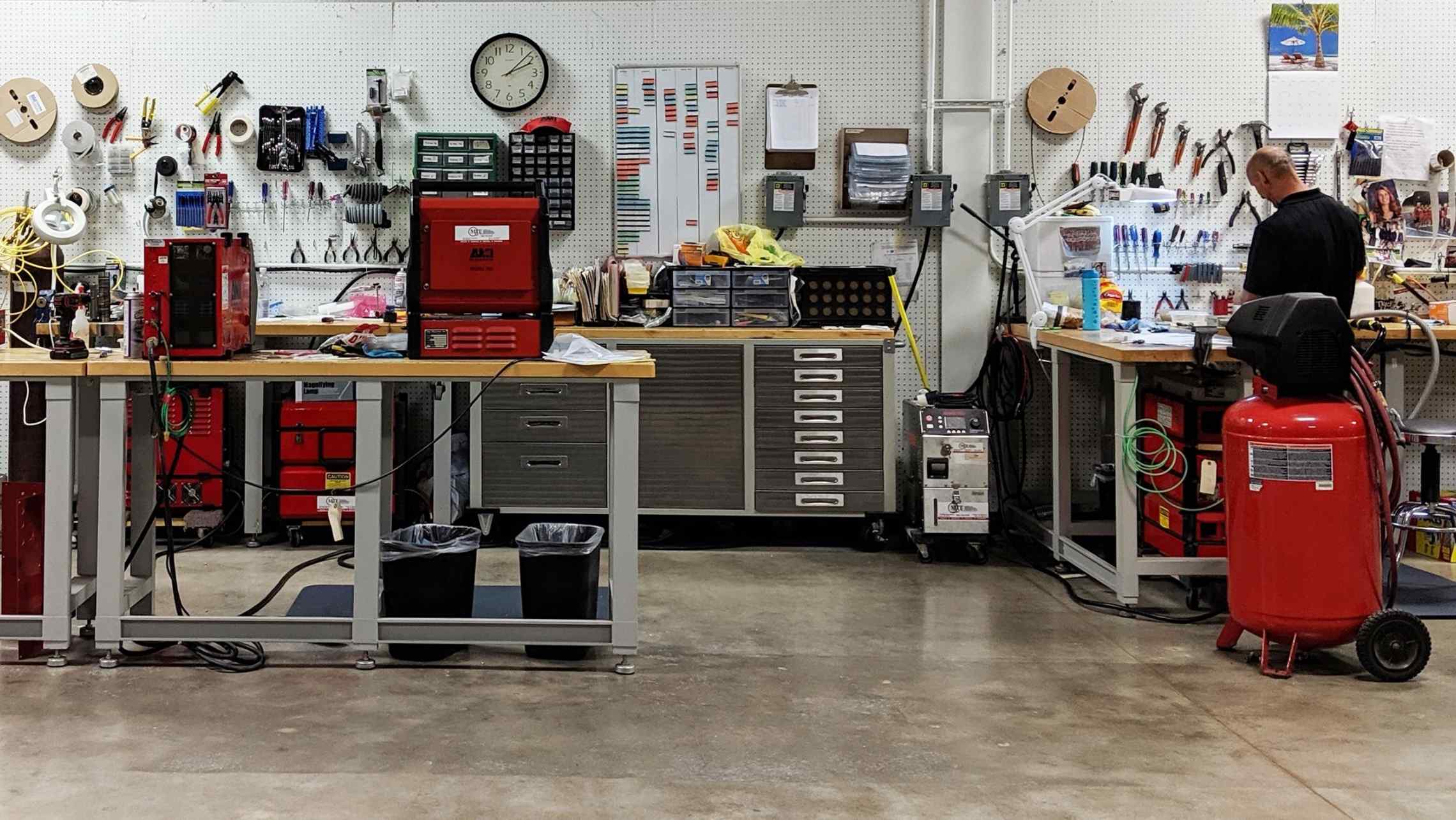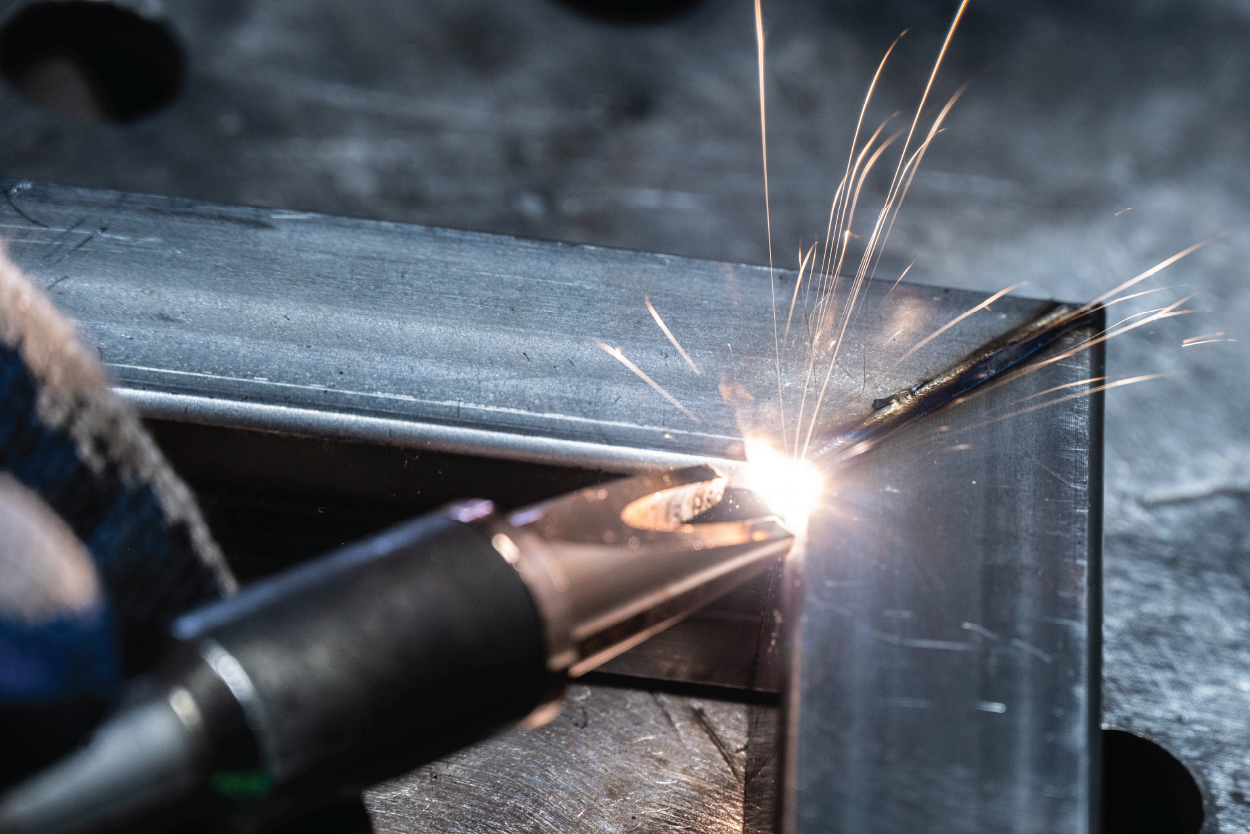Common Welding Repair Issues and Just How to Address Them Efficiently
Welding repairs commonly come across a variety of problems that can jeopardize the integrity of the last item. Typical issues consist of insufficient penetration, porosity, and misalignment, amongst others. Each issue provides one-of-a-kind difficulties that require details approaches for resolution. Recognizing these problems is important for welders aiming to enhance their outcomes and skills. This discussion will certainly explore these common welding fixing problems and efficient techniques to resolve them.
Inadequate Infiltration
Poor penetration takes place when the weld metal falls short to totally fuse with the base material, resulting in weak joints and possible structural failures. This issue typically comes from not enough warm input, incorrect electrode angle, or inappropriate welding speed. Welders might run into insufficient penetration as a result of a miscalculation of the necessary specifications for a details material density or type. Furthermore, contamination on the base product's surface area can prevent effective bonding, intensifying the trouble. To deal with poor penetration, welders ought to assure suitable setups on their equipment and maintain a tidy work surface area. Normal assessment of welds is suggested to recognize any shortages early, enabling timely modifications and the avoidance of jeopardized architectural integrity in bonded settings up.
Porosity
Porosity is a typical flaw in welded joints that manifests as little gas bubbles caught within the weld steel. This defect can endanger the stability of the weld, leading to minimized toughness and potential failing under anxiety. Montana Mobile Welding and Repair Belgrade. Porosity usually occurs from contamination, moisture, or incorrect welding techniques, which allow gases to escape right into the liquified weld swimming pool. To attend to porosity, welders ought to guarantee appropriate surface area prep work, maintain a tidy working environment, and make use of suitable welding specifications. In addition, choosing the right filler material and shielding gas can alleviate gas entrapment. Regular examination and screening of welds can aid identify porosity early, guaranteeing prompt corrective activities are taken, consequently preserving the quality and reliability of the bonded structure
Misalignment
Imbalance in welding can emerge from various factors, including inappropriate arrangement and thermal growth. Recognizing the origin is vital for reliable resolution. A number of adjustment strategies are readily available to realign elements and ensure structural integrity.
Root causes of Misalignment
Welding misalignment commonly originates from a range of underlying issues that can compromise architectural honesty. One key cause is incorrect fit-up of parts prior to welding, which can lead to gaps and uneven surfaces. Variations in thermal growth during the welding procedure can also result in distortion, especially if the products being joined have various coefficients of expansion. In addition, insufficient fixturing and securing might fail to hold elements firmly in location, leading to movement throughout welding. Poorly kept devices, including welding equipments and devices, may introduce variances in the weld bead, further adding to imbalance. Lastly, driver error, originating from not enough training or experience, can additionally play a considerable role in developing misaligned welds.
Correction Strategies Offered
Dealing with misalignment successfully needs a combination of rehabilitative techniques tailored to the details issues at hand. One typical approach is making use of components or jigs to hold elements in the right placement throughout welding, guaranteeing regular positioning. Additionally, preheating the materials can help in reducing distortion and enhance fit-up. For significant misalignment, mechanical adjustment methods, such as making use of hydraulic jacks or clamps, can be employed to correct the placement before welding. Post-weld warmth treatment might also be necessary to eliminate tensions triggered by misalignment. Careful inspection and modification throughout the arrangement phase can protect against misalignment problems from becoming substantial troubles, promoting a smoother welding process and improving total architectural integrity.
Distortion
Distortion is a typical challenge in welding that can arise from numerous aspects, including unequal heating and air conditioning. Comprehending the root causes of distortion is crucial for implementing effective avoidance strategies. Resolving this issue not only boosts structural honesty yet additionally boosts the general high quality of the weld.
Reasons for Distortion
When based on the extreme warm of welding, products usually undergo changes that can lead to distortion. This sensation mostly emerges from thermal growth and tightening throughout the welding process. As the weld location warms up, the product expands; upon air conditioning, it contracts, which can produce inner tensions. In addition, unequal heating throughout a workpiece can exacerbate these stresses, leading to warping or flexing. The type of product likewise plays a substantial duty; metals with differing thermal conductivity and coefficients of growth may respond in different ways, bring about uncertain distortions. Bad joint design and insufficient fixturing can add to misalignment throughout welding, boosting the probability of distortion. Comprehending these causes is crucial for efficient welding repair service and prevention strategies.
Prevention Techniques
Efficient avoidance techniques for distortion during welding concentrate on controlling heat input and making certain correct joint design. Preserving a constant warmth input aids to lessen thermal growth and contraction, which can lead to distortion. Utilizing methods such as preheating the work surface can additionally reduce the temperature gradient, advertising uniform heating. Furthermore, picking appropriate joint styles, such as T-joints or lap joints, can improve stability and decrease anxiety focus. Implementing proper fixturing to safeguard the workpieces in position additionally help in preserving positioning throughout the welding procedure. Staggered welding sequences can distribute heat a lot more equally, stopping local distortion. By using these approaches, welders can significantly reduce the probability of distortion and enhance the total high quality of their welds.
Breaking
Splitting is a typical concern experienced read this article in welding repair work, usually resulting from numerous aspects such as incorrect air conditioning prices, material option, or poor joint prep work. The event of splits can substantially jeopardize the stability of the weld, causing prospective failings during operation. To address this problem, welders have to first assess the source, ensuring that products work and properly selected for the details application. Furthermore, controlling the cooling price during the welding procedure is vital; quick air conditioning can induce stress and result in breaking. Appropriate joint design and prep work additionally add to lessening the risk. Implementing these methods can improve weld top quality and longevity, ultimately minimizing the probability of breaking in finished weldments.

Incomplete Fusion
A significant issue in welding repair work is incomplete combination, which occurs when the weld metal does not properly bond with the base product or previous weld passes - Montana Mobile Welding and Repair. This flaw can cause weaknesses in the joint, potentially compromising the honesty of the welded framework. Aspects adding to incomplete fusion consist of not enough heat input, inappropriate welding strategy, and contamination of the surfaces being signed up with. To resolve this issue effectively, welders ought to guarantee correct pre-weld cleansing and surface prep work, along with adjust their welding criteria to attain ample infiltration and combination. Normal examination during the welding process can additionally help identify incomplete combination early, enabling timely corrective procedures to boost the total top quality of the weld
Overheating
While welding repairs can improve structural stability, overheating offers a significant obstacle that can lead to product destruction. Too much heat during welding can change the mechanical homes of metals, leading to minimized strength, raised brittleness, and warping. This sensation is particularly essential in high-stress applications where structural dependability is extremely important. Identifying getting too hot can involve visual evaluations for staining or distortion, as well as keeping track of temperature throughout the welding process. To mitigate the risks related to overheating, welders must employ appropriate techniques, such go to website as regulating warmth input, adjusting travel speed, and using suitable filler materials. Additionally, carrying out pre- and post-weld warm therapies can help bring back product buildings and enhance the overall top quality of the repair work, ensuring long-term efficiency and safety and security.
Frequently Asked Inquiries
What Are the Common Signs of a Welding Flaw?

How Can I Evaluate My Welds for High quality?
To evaluate welds for quality, one can make use of visual inspections, ultrasonic screening, and radiographic approaches. Each technique assures architectural integrity, identifies problems, have a peek at this site and validates adherence to specified criteria, ultimately improving the dependability of the welded joints.
What Safety and security Precautions Should I Take While Welding?
When welding, one need to prioritize safety by putting on ideal individual safety tools, ensuring proper air flow, protecting flammable products away, keeping a tidy work space, and understanding environments to stop mishaps and injuries.
Can I Fix a Weld Without Redesigning the Entire Joint?
Repairing a weld without redoing the whole joint is possible, depending upon the damage (Montana Mobile Welding and Repair Belgrade Fabrication). Strategies such as grinding, adding filler material, or making use of a welding procedure can properly resolve details flaws while protecting the surrounding framework
What Devices Are Crucial for Effective Welding Services?
Vital tools for efficient welding repair services consist of a welding maker, wire brush, mill, protective gear, clamps, and filler materials. Each tool plays an important role in ensuring high quality and safety and security throughout the repair work process. Porosity typically arises from contamination, wetness, or improper welding techniques, which enable gases to leave right into the liquified weld pool. Badly conserved equipment, consisting of welding devices and tools, might present inconsistencies in the weld bead, more contributing to imbalance. When subjected to the extreme warm of welding, products frequently go through changes that can lead to distortion. Fracturing is a common concern come across in welding repairs, usually resulting from various aspects such as improper cooling rates, material choice, or insufficient joint preparation. A considerable problem in welding fixings is insufficient combination, which happens when the weld steel does not adequately bond with the base material or previous weld passes.
Comments on “Why welds crack and how Montana Mobile Welding and Repair solves them”